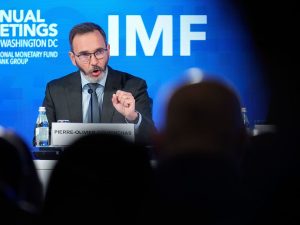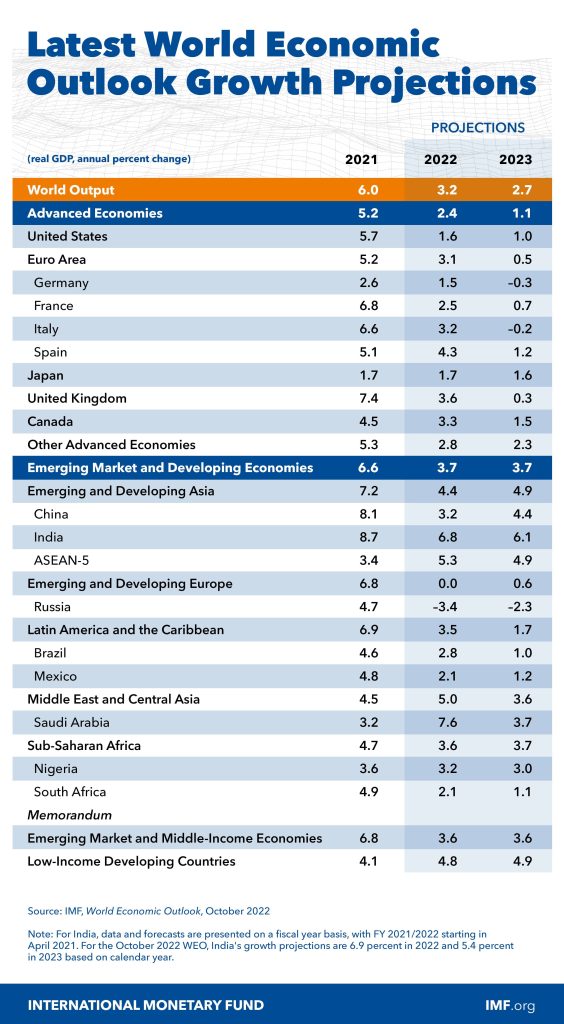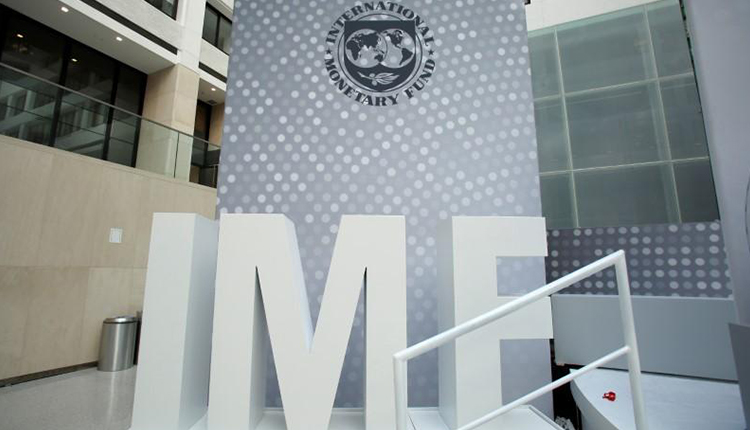The International Monetary Fund (IMF) said on Tuesday that the global economy is sliding into recession next year as households and businesses in most countries face “stormy waters”.
China’s zero-COVID policy and fragile housing market, the need to hike interest rates to curb inflation in advanced economies, and skyrocketing energy and food prices following the Russian war in Ukraine will lower world economic growth from 3.2 percent in 2022 to 2.7 percent next year, the IMF predicted.
Yet, IMF’s growth forecast for 2023 is the lowest for the year ahead that the Fund has published since 2001, apart from the years of the pandemic and following the global financial crisis.
IMF economists judged that there was a greater than even chance that the world economy would perform worse than its central forecast and a 25 percent chance that growth would drop below 2 percent. That would reflect global economic weakness witnessed only one year in 10 and only in 1973, 1981, 1982, 2009, and 2020 over the past half a century.

Pierre Olivier Gourinchas, chief economist at the International Monetary Fund (IMF)
Pierre Olivier Gourinchas, IMF’s chief economist, told the Financial Times that there was as much as a 15 percent chance global growth could drop below 1 percent eventually. This level would likely meet the threshold of a recession and would be “very, very painful for a lot of people.” Gourinchas added.
“We are not in a crisis yet, but things are really not looking good,” the IMF economist said, adding that 2023 would be the “darkest hour” for the global economy.
Financial turmoil, driven by a shift into dollar assets, threatened to compound the economic threat.
“As the global economy is headed for stormy waters, financial turmoil may well erupt, prompting investors to seek the protection of safe-haven investments, such as U.S. Treasuries, and pushing the dollar even higher,” Gourinchas noted in his statement that accompanied the IMF report.
Although the sharp hikes in interest rates worldwide were weighing on growth, the IMF stated they were necessary to ensure inflation come back under control and restore the global economy to a more stable footing.
The IMF forecasts inflation in advanced economies will reach 7.2 percent this year and 4.4 percent next year, both more than 1 percentage point higher than its previous April forecasts for 2023. For emerging and developing economies, consumer price growth will peak at an annual pace of almost 10 percent in 2022 before moderating to 8.1 percent in 2023.
“On the front lines, you have the central banks. That’s their job, that’s their mandate [and] their whole reputation is at stake,” Gourinchas said. The IMF added that the monetary authorities must “stay the course” rather than repeat the mistakes of the 1970s when most monetary policymakers did not have the courage to keep raising interest rates when their economies slowed or stalled.
There was a chance of tightening monetary policy too much, the IMF admitted in its report. However, it said the risks of doing too much were not as serious as letting inflation rates become normalised and ingrained into everyday life.
For the U.S. Federal Reserve in particular, the IMF economist warned it was too soon for it to back off from its aggressive campaign to tighten monetary policy.
“We are far from having won that battle,” said Gourinchas, adding that any signal that the Fed would not hike rates further could, at this point, be interpreted by financial markets as a sign policymakers were unwilling “to do what it takes.”
“Inflation expectations could de-anchor and we could have a more persistent process,” he added.
The IMF expanded on its recent criticism of the UK economic policy, advising all countries not to have highly expansionary policies of taxation and public spending, despite the increase in energy and food prices.
There was a need to decrease deficits and rebuild fiscal buffers, Gourinchas noted. “Doing otherwise will only prolong the fight to bring inflation down, risk de-anchoring inflation expectations, increase funding costs, and stoke further financial instability, complicating the task of fiscal as well as monetary and financial authorities, as recent events illustrated,” he added in his statement.
Likening it to two drivers, each with their own steering wheels, Gourinchas also told the Financial Times that opposing fiscal and monetary policies prompted financial markets to question, “which way is that car going? Are we really fighting inflation or are we really stimulating economic activity?”
In IMF’s revised forecasts, 93 percent of countries received downgrades to their growth outlook.
The 2022 global growth forecast has fallen from 4.9 percent in the IMF’s report a year ago to 3.2 percent now. The Fund’s 2023 growth estimate was cut from 3.6 percent a year ago to 2.3 percent, with the downgrades concentrated in advanced economies rather than in the emerging world.
China’s economy was forecast to grow only 4.4 percent in 2022, well below the Beijing government’s 5.5 percent growth target. The IMF expects this annual growth rate to improve only to 4.6 percent over the upcoming five years.
The U.S. economy is projected to stagnate over the four quarters of 2022 and then maintain a sluggish 1 percent growth rate in 2023. Several European countries will fall into recession, the IMF expected, as households and companies struggle to adapt with natural gas prices five times 2021 levels.
The IMF was no more optimistic about the future as it said the downgrades were likely to be permanent. Scarring from the pandemic and the war in Ukraine would leave the global economy 4.3 percent smaller in 2024 than it projected in January 2020 as coronavirus began to spread globally.

